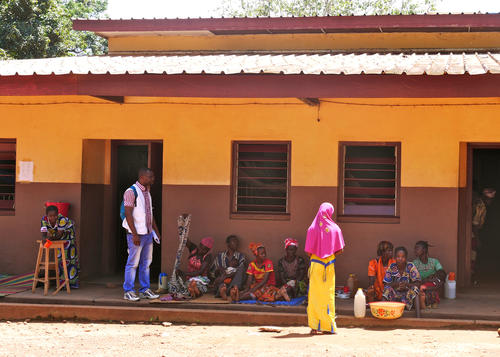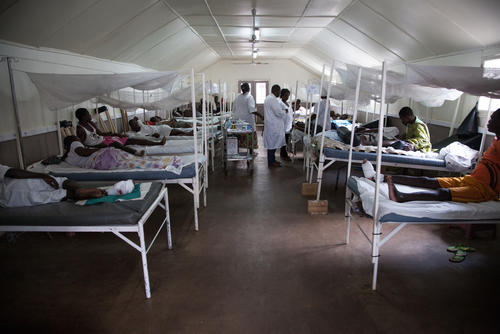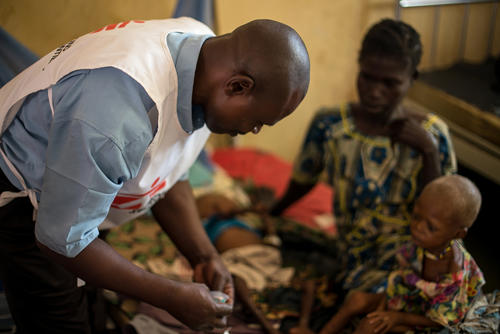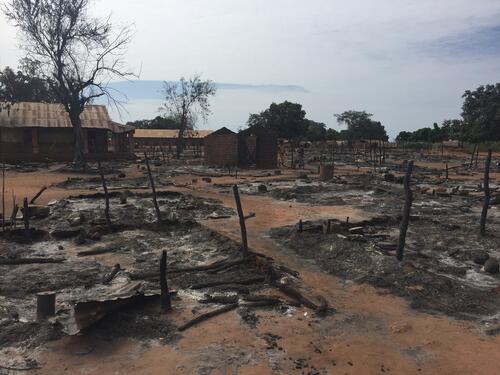Since 14 May 2018, a new cycle of inter-community violence has taken hold in Bambari, a city in the Central African Republic (CAR) that, in 2017, remained relatively stable while the rest of the country spiralled into increasingly fractured conflict. MSF’s surgery team, which supports the local hospital, cared for 17 wounded, two of whom unfortunately succumbed to their injuries.
It began with the discovery of bodies in southern Bambari. The details of the killings are still unclear, but the repercussions are a common theme in the Central African Republic, where each incident triggers a cycle of revenge and retaliation felt across all communities, particularly by civilians.
The city of Bambari, located in central CAR, had been lauded as an example of successful disarmament since an intervention by UN forces (MINUSCA) in February 2017. Today, it is again a battlefield of armed men—its streets are deserted, houses burnt, and official buildings occupied. The people are all too familiar with the cycles of violence, fear, and death. In just a few hours, more than 300 men, women and children sought refuge at the hospital, with the hope it would be safer than their own neighbourhoods.
“We heard shots all day long on 15 May. At the hospital where we operate, we cared for 17 people who were injured in the violence, mostly by gunshot,” explains Dismas Vuningoma, coordinator of the MSF project in Bambari. “The 300 displaced people who initially sought refuge in the hospital fled the city as fast as they could, along with most Bambari residents. They didn’t even take the time to go to the bridge. They just jumped in the river to cross and seek safety on the other side.”
Bambari still carries the stigma of the 2013-2014 crisis. On either side of the river that intersects the city, 39,000 displaced people from various communities who were never able to return home, or only reside temporarily in between outbreaks of violence, are living in camps. Bambari was nonetheless a symbol of peace throughout 2017. Businesses had started up again and thousands of newly displaced people were taking refuge in the city for its relative stability.
But we are well aware that declaring Bambari a “weapons-free city” only pushed the problem to surrounding areas, especially in the southern part of the city near Alindao, in the east near Ippy, and in the mining regions of Ndassima to the north, where armed groups battle for control. From January to April 2018, MSF teams in Bambari treated 113 people wounded in the war zones. They have also ramped up medical services via mobile clinics for newly displaced people from the Ndassima and Ippy regions who have gathered in the city outskirts.
“Most people came with nothing, having walked for several days either alone or with their children. They have settled in neighbourhoods near the airport, with host families, or in shelters built from dry grass and offering little protection from the rain,” says Vuningoma. “The living conditions are deplorable. There is no running water, no electricity, no access to basic care.”
The violence has now reached Bambari, causing loss of life and further displacement, just weeks after the city of Bangui, to the southwest, which was also spared from most of the violence of 2017, experienced its worst fighting since 2015.
“This week, a new city in the Central African Republic became the scene of violent fighting, once again reducing the number of places where the people of CAR could hope to live in peace with their families,” laments Paul Brockmann, MSF’s head of mission in CAR. “By the end of 2017, the number of internally displaced people was the highest it had been since the 2014 crisis. We’ve now observed again hundreds of people fleeing Bambari in search of safety. The people of the Central African Republic seem very much trapped in an endless cycle of indiscriminate violence.”
Médecins Sans Frontières has worked in Central African Republic since 1997, where its teams provide primary healthcare and hospital care in Bria, Bangassou, Bambari, Kabo, Batangafo, Paoua, Bossangoa, Boguila, Carnot and Bangui. Its emergency team is currently providing support to the people of Ippy, who are affected by fighting in the area. According to UNHCR, nearly 690,000 Central Africans have been internally displaced by violence, and 569,000 have become refugees abroad.






